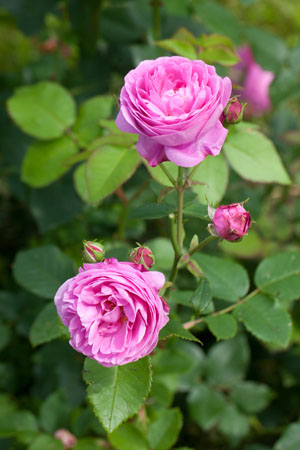Rosa all species
|
Overview
 Libraries
The following libraries are associated with this organism.
Genomes
Whole Genome Sequences & Annotations for Rosa
SNP Array
Description
Roses belong to the genus Rosa and have been cultivated as ornamental plants for more than two thousand years and are available in a range of distinct forms such as hybrid tea, floribunda, hybrid perpetual, grandiflora, shrubs, miniatures, old roses, and many others. There are about 120 wild rose species and more than 20,000 commercial cultivars. Most of the commercial cultivars are complex tetraploid (x = 7) or triploid hybrids derived from eight to ten wild diploid and a few tetraploid rose species. Intensive breeding during the last two centuries has resulted in a profusion of cultivars bred for color, fragrance and form; however, relatively little has been done for the development of resistance to the range of biotic and abiotic stresses. Among ornamental woody plants, roses have a small genome, about 600 Mbp/haploid, which is only four times the genome size of Arabidopsis. Rose species and cultivars are highly polymorphic for morphological traits, isozymes, and DNA markers. In addition, roses have many traits preferred by consumers such as a wide range of flower types, fragrances, colors and sizes, availability of flowers throughout the year mainly due to the recurrent blooming ability, variety of growth habits ranging from miniatures to climbers, and good cut-flower keeping qualities. (adapted from Rosaceae Whitepaper) Transcripts
Available Rosa transcript data in GDR . Click on the Transcript Assembly name for more detailed information.
|
